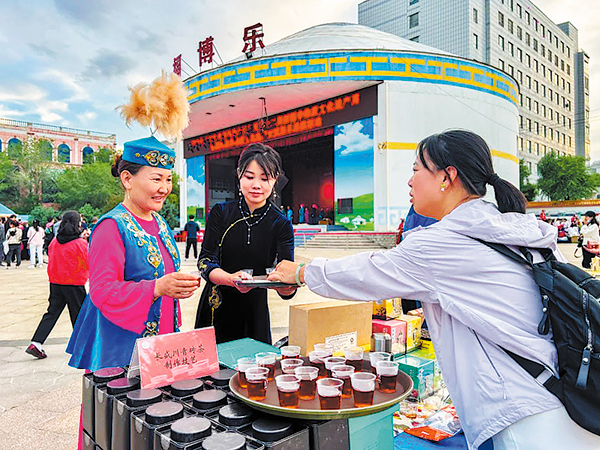

Years of practice have brought the embroiderers in Xinjiang to an intermediate level of mastery, equivalent to municipal-level intangible cultural heritage bearers.
"Their works now demonstrate not only technical excellence, but, more importantly, reflect a successful fusion of traditional craftsmanship and contemporary aesthetics, making them well-suited to broader market demands," He says.
Today, more than 200 embroiderers work in local cooperatives, each earning an average of 20,000 yuan ($2,808) per year, according to him.
"They now can make money at home while minding their children," He says.
To date, the Jin embroidery business and the Xinjiang embroiderers have developed a deep collaborative mechanism in which orders are provided from He's operations and fulfilled by Xinjiang-based craftswomen.
When order volumes exceed local capacity in Xinjiang, Shanxi provides production support. The two sides have also created a "barter trade" framework, enabling mutual promotion and sales of each other's products.
Meanwhile, another centuries-old trade is renewing ties between central Hubei province and Xinjiang.
Jian Nisi, deputy director of Hubei Changshengchuan Tea Research Institute, stood at a cultural exhibition in Hotan in August holding a dark brick of tea that drew many curious local residents.
"For Uygur and Mongolian families, our brick tea is the foundation of their milk tea. It's more than a drink, it is the drink of life on the grasslands," Jian says.